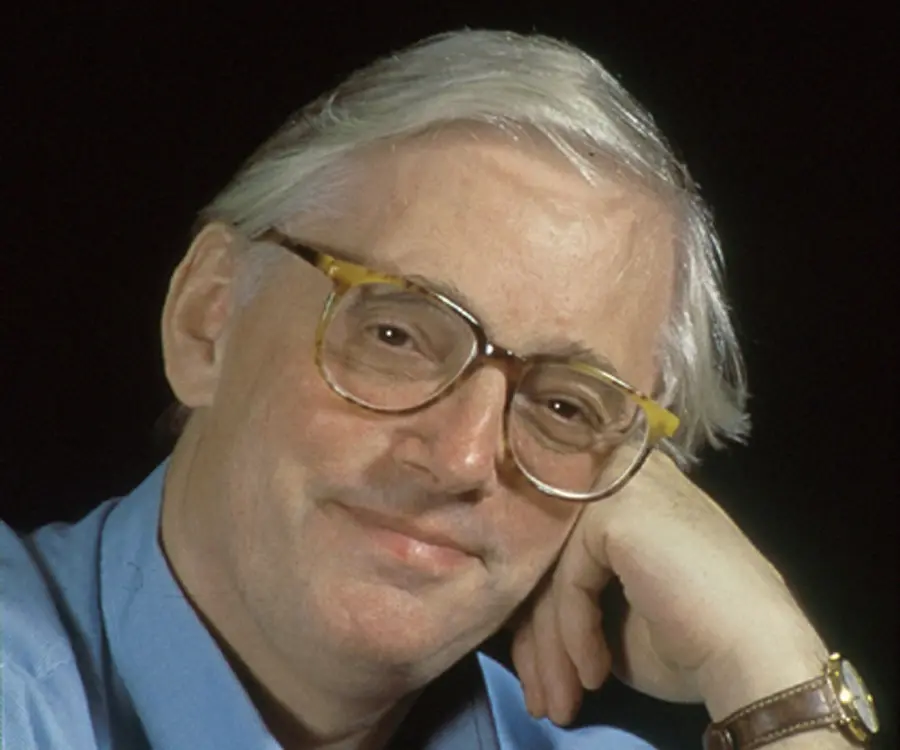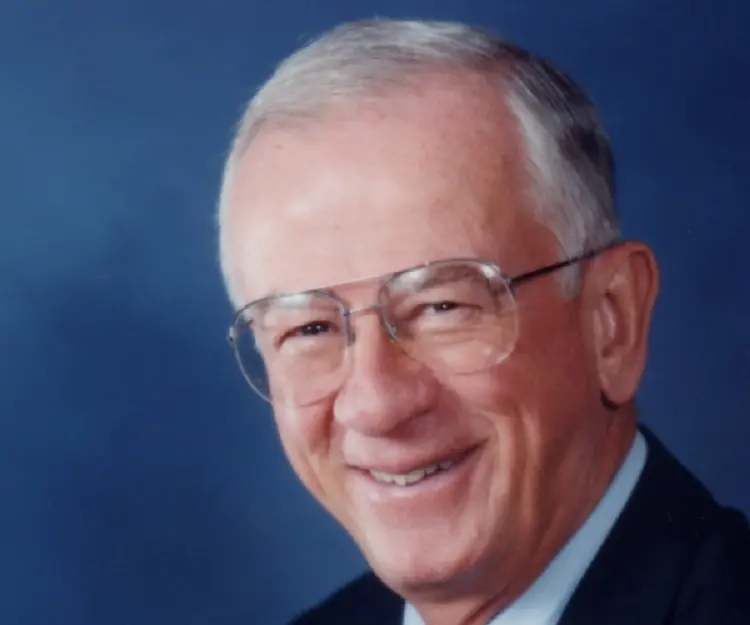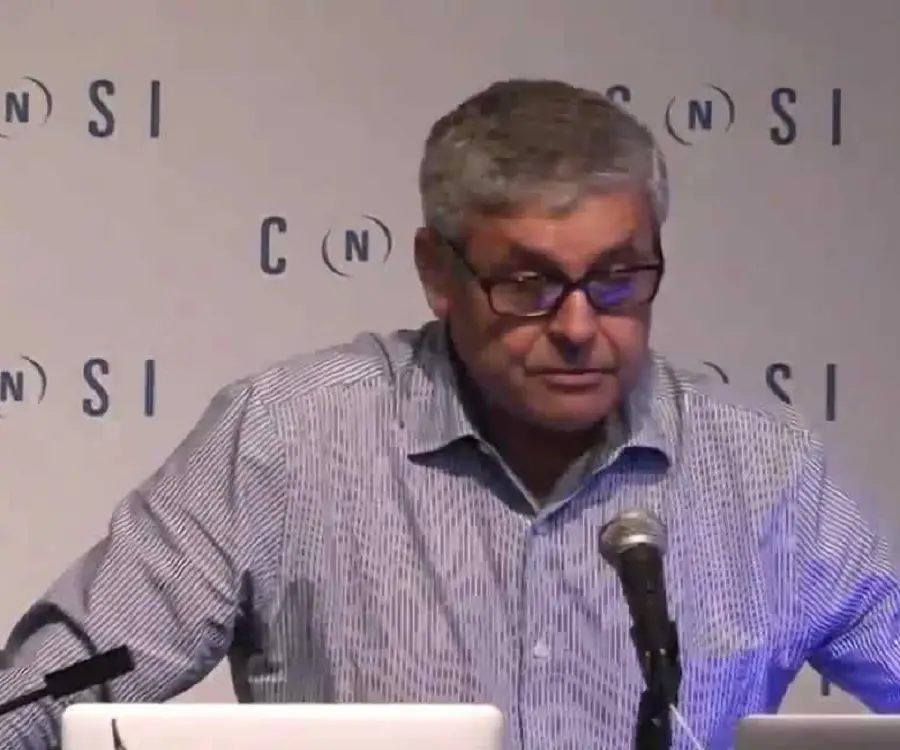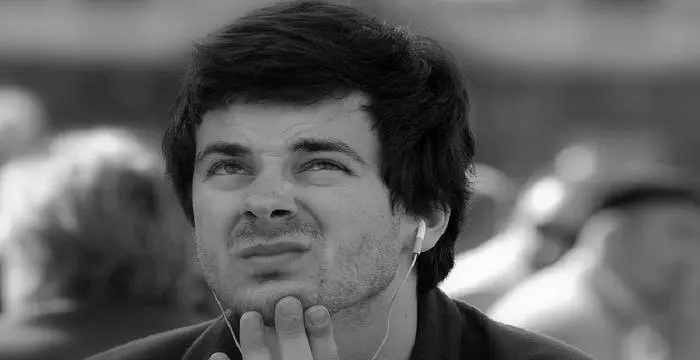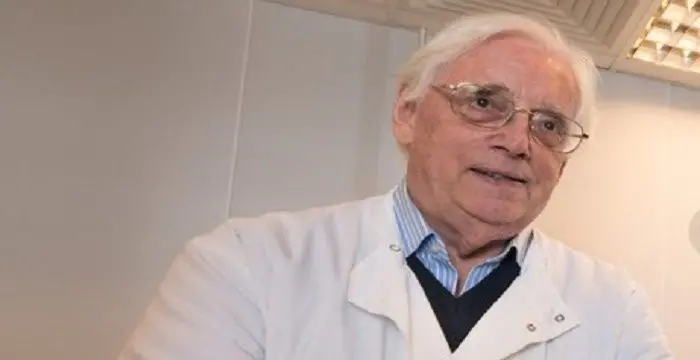
John E. Walker - Scientists, Career and Childhood
John E. Walker's Personal Details
John Walker is an English chemist who was one of the co-recipients of 1997 the Nobel Prize in Chemistry
| Information | Detail |
|---|---|
| Birthday | January 7, 1941 |
| Nationality | British |
| Famous | Scientists, Chemists |
| Spouses | Christina Westcott (m. 1963) |
| Known as | Sir John Ernest Walker |
| Childrens | Esther, Miriam |
| Birth Place | United Kingdom |
| Gender | Male |
| Father | Thomas Ernest Walker |
| Mother | Elsie Walker |
| Sun Sign | Capricorn |
| Born in | United Kingdom |
| Famous as | Chemist |
// Famous Chemists
Henry Cavendish
Henry Cavendish was a theoretical chemist and physicist, renowned for discovery of hydrogen and calculation of the mass of earth. To know more about his childhood, profile, timeline and career read on
Walter Kohn
Nobel Laureate Walter Kohn was an Austrian-born American theoretical chemist and physicist. Check out this biography to know about his childhood, life, achievements, works & timeline.
Jabir Ibn Hayyan
Jabir Ibn Hayyan was a medieval era polymath. Check out this biography to know about his life, works and achievements.
John E. Walker's photo
Who is John E. Walker?
John Walker is an English chemist who was one of the co-recipients of 1997 the Nobel Prize in Chemistry. Along with Paul Boyer, the fellow co-recipient of the Nobel Prize, he is credited for the elucidation of the enzymatic mechanism underlying the synthesis of adenosine triphosphate (ATP). Boyer and Walker together discovered the way life forms produced energy. While Boyer was involved with how ATP synthase worked, Walker is credited for using X-ray crystallography to determine the structure of ATP synthase. A postdoctoral fellow at the University of Wisconsin and later at the French National Centre for Scientific Research, Walker attended a research workshop in 1974 in Cambridge that changed the course of his career. On the insistence of Fred Sanger, Walker joined the University of Cambridge in the Medical Research Council's Laboratory of Molecular Biology (LMB) for a trial three month basis. The appointment eventually turned into a two decade long association, transforming Walker’s scientific career completely. Following his research, Walker started applying protein chemical methods to membrane proteins. He began the structural study of the ATP synthase from bovine heart mitochondria and from eubacteria, the results of which gave new insight as to how ATP is made in the biological world.
// Famous Scientists
Juliane Koepcke
Juliane Koepcke is a German-Peruvian biologist, who was the lone survivor among the 92 passengers and crew of the ill-fated LANSA Flight 508 that crashed in the Peruvian rainforest on 24 December 1971. Know more about her life in this biography.
Henry Cavendish
Henry Cavendish was a theoretical chemist and physicist, renowned for discovery of hydrogen and calculation of the mass of earth. To know more about his childhood, profile, timeline and career read on
Konstantin Tsiolkovsky
Konstantin Tsiolkovsky was a Russian rocket scientist and a pioneer of astronautics. This biography provides detailed information about his childhood, family, personal life, career, achievements, etc.
Childhood & Early Life
John E Walker was born on January 7, 1941 in Halifax, England to Thomas Ernest Walker and Elsie Lawton. His father was a stonemason while his mother was an amateur musician. He had two younger sisters.
He gained his early education from Rastrick Grammar School, where he specialized in physical science and mathematics in his last three years. While at school, he captained school’s soccer and cricket teams.
Following his preliminary studies, he enrolled at the St Catherine’s College, Oxford in 1960. Four years later, he gained his Bachelor of Arts degree in Chemistry.
Career
In 1965, John Walker began his research on peptide antibiotics with EP Abraham at Sir Willian Dunn School of Pathology, Oxford. Four years later, he was awarded D Phil degree in the subject.
While researching on peptide antibiotics, Walker keenly followed John Kendrew’s hosted television programmes that publicized the remarkable developments made in the field of molecular biology during the 1950s and early 1960s. The details of the research in the field were later published in the book ‘The Thread of Life’ in 1966.
Deeply influenced by Kendrew’s television show and the book, he went on to broaden his knowledge and understanding of molecular biology. He did this by reading books, including JD Watson’s ‘Molecular Biology of the Gene’ and William Hayes’ ‘Bacterial Genetics’. He also briefed himself in the subject by attending lectures of David Phillips, professor of molecular biology in Oxford, on protein structure and Henry Harris, professor of pathology, on nucleus and cytoplasm.
Walker studied abroad for five years. From 1969 to 1971, he studied at the School of Pharmacy at the University of Wisconsin and later from 1971 to 1974, in France. He was supported by fellowships from NATO and EMBO, first at the CNRS at Gif-sur-Yvette and then at the Institut Pasteur.
In 1974, Walker attended a research workshop in Cambridge titled ‘Sequence Analysis of Proteins’. The workshop was jointly organized by Ieuan Harris from the Medical Research Council's Laboratory of Molecular Biology (LMB) and by Richard Perham from the Cambridge University Department of Biochemistry. It was at the workshop that Walker first met Fred Sanger.
Upon Sanger’s suggestion, Walker approached Ieuan Harris and proposed about joining the latter’s group. He was eventually absorbed in the Protein and Nucleic Acid Chemistry (PNAC) Division at the Laboratory of Molecular Biology of the Medical Research Council for three months from June 1974. What started on a trial basis eventually turned into a full time appointment that carried on for more than two decades, transforming Walker’s scientific career completely!
When Walker stepped into LMB, the laboratory had prominent scientists working under it, including Max Perutz, Fred Sanger, Francis Crick, Cesar Milstein and so on. Walker’s profile included analysing the sequences of the proteins from G4 and from mitochondria using direct methods.
While analysing the sequences of protein, Walker discovered triple overlapping genes in G4 where all three DNA phases encode proteins. In 1978, Walker applied protein chemical methods to membrane proteins. He found out subunits I and II of cytochrome c oxidase were encoded in the DNA in mitochondria. Eventually, he uncovered details of the modified genetic code in mitochondria.
In addition to applying protein chemical methods to membrane proteins, Walker began the structural study of the ATP synthase from bovine heart mitochondria and from eubacteria. It was this study that eventually resulted in a complete sequence analysis of the complex from several species and in the atomic resolution structure of the F catalytic domain of the enzyme from bovine mitochondria, giving new insights into how ATP is made in the biological world.
Walker’s atomic resolution structure supported the binding change mechanism and rotary catalysis for the ATP synthase, one of the catalytic mechanisms proposed by Paul Boyer. The work done by Walker was later published in 1994, which led to his share of the Nobel Prize in Chemistry in 1997.
Over the years, Walker and his colleagues have produced most of the crystal structures in the PDB of mitochondrial ATP synthase, including transition state structures and protein with bound inhibitors and antibiotics. Scientists trained in Walker's group at the MRC Laboratory of Molecular Biology in Cambridge or MRC Mitochondrial Biology Unit have gone on to determine crystal bacterial complex I and cryo-EM maps of mitochondrial complex I and vacuolar type ATPases.
In 1998, he was appointed Director of MRC Dunn Human Nutrition Unit at Cambridge. In 2009, the unit changed to Mitochondrial Biology Unit focussing on the mechanisms of energy conversion in the mitochondrion and on the role of that organelle in human health and disease. Till date, he serves as the Emeritus Director and Professor at the MRC.
Major Works
John Walker’s most important contribution came during the latter half of the 1970s when he started applying protein chemical methods to membrane proteins. He next began the structural study of the ATP synthase from bovine heart mitochondria and from eubacteria. It was this study that gave new insights into how ATP is made in the biological world. His work supported the binding change mechanism and rotary catalysis for the ATP synthase, one of the catalytic mechanisms. Together with Paul Boyer, Walker elucidated the enzymatic mechanism underlying the synthesis of adenosine triphosphate.
Awards & Achievements
In 1959, Walker received the AT Clay Gold Medal.
In 1994, he received the Johnson Foundation Prize by the University of Pennsylvania.
In 1996, he was presented the CIBA Medal and Prize of the Biochemical Society, and the Peter Mitchell Medal of the European Bioenergetics Congress.
In 1997, Walker was conferred with the prestigious Nobel Prize in Chemistry for elucidating the enzymatic mechanism underlying the synthesis of adenosine triphosphate (ATP). He shared his half of the prize with Paul Boyer.
In 1999, Walker was knighted for his services to molecular biology.
In 2012, he was awarded the Royal Society’s highest honor, Copley Medal for his outstanding contribution in the field of biochemistry and molecular biology.
Personal Life & Legacy
Walker married Christina Westcott in 1963. The couple is blessed with two daughters, Esther and Miriam.
// Famous Capricorn Celebrities peoples
Weston Koury
All about American social media star Weston Koury, including his age, family life, girlfriends, birthday, and some fun facts.
Elin Nordegren
Elin Nordegren is the ex-wife of Tiger Woods. Check out this biography to know about her childhood, family life, achievements and fun facts about her life.
ItsJustNick
ItsJustNick is a Canadian YouTube star & social media personality. Let’s take a look at his family and personal life including age, date of birth, net worth, girlfriends, and fun facts.
John E. Walker's awards
| Year | Name | Award |
|---|---|---|
Other | ||
| 0 | 1997 - Nobel Prize in Chemistry | |
| 0 | 2012 - Copley Medal | |
John E. Walker biography timelines
- // 7th Jan 1941John E Walker was born on January 7, 1941 in Halifax, England to Thomas Ernest Walker and Elsie Lawton. His father was a stonemason while his mother was an amateur musician. He had two younger sisters.
- // 1959In 1959, Walker received the AT Clay Gold Medal.
- // 1960Following his preliminary studies, he enrolled at the St Catherine’s College, Oxford in 1960. Four years later, he gained his Bachelor of Arts degree in Chemistry.
- // 1963Walker married Christina Westcott in 1963. The couple is blessed with two daughters, Esther and Miriam.
- // 1965In 1965, John Walker began his research on peptide antibiotics with EP Abraham at Sir Willian Dunn School of Pathology, Oxford. Four years later, he was awarded D Phil degree in the subject.
- // 1966While researching on peptide antibiotics, Walker keenly followed John Kendrew’s hosted television programmes that publicized the remarkable developments made in the field of molecular biology during the 1950s and early 1960s. The details of the research in the field were later published in the book ‘The Thread of Life’ in 1966.
- // 1969Walker studied abroad for five years. From 1969 to 1971, he studied at the School of Pharmacy at the University of Wisconsin and later from 1971 to 1974, in France. He was supported by fellowships from NATO and EMBO, first at the CNRS at Gif-sur-Yvette and then at the Institut Pasteur.
- // 1974In 1974, Walker attended a research workshop in Cambridge titled ‘Sequence Analysis of Proteins’. The workshop was jointly organized by Ieuan Harris from the Medical Research Council's Laboratory of Molecular Biology (LMB) and by Richard Perham from the Cambridge University Department of Biochemistry. It was at the workshop that Walker first met Fred Sanger.
- // Jun 1974Upon Sanger’s suggestion, Walker approached Ieuan Harris and proposed about joining the latter’s group. He was eventually absorbed in the Protein and Nucleic Acid Chemistry (PNAC) Division at the Laboratory of Molecular Biology of the Medical Research Council for three months from June 1974. What started on a trial basis eventually turned into a full time appointment that carried on for more than two decades, transforming Walker’s scientific career completely!
- // 1978While analysing the sequences of protein, Walker discovered triple overlapping genes in G4 where all three DNA phases encode proteins. In 1978, Walker applied protein chemical methods to membrane proteins. He found out subunits I and II of cytochrome c oxidase were encoded in the DNA in mitochondria. Eventually, he uncovered details of the modified genetic code in mitochondria.
- // 1994 To 1997Walker’s atomic resolution structure supported the binding change mechanism and rotary catalysis for the ATP synthase, one of the catalytic mechanisms proposed by Paul Boyer. The work done by Walker was later published in 1994, which led to his share of the Nobel Prize in Chemistry in 1997.
- // 1994In 1994, he received the Johnson Foundation Prize by the University of Pennsylvania.
- // 1996In 1996, he was presented the CIBA Medal and Prize of the Biochemical Society, and the Peter Mitchell Medal of the European Bioenergetics Congress.
- // 1997In 1997, Walker was conferred with the prestigious Nobel Prize in Chemistry for elucidating the enzymatic mechanism underlying the synthesis of adenosine triphosphate (ATP). He shared his half of the prize with Paul Boyer.
- // 1998 To 2009In 1998, he was appointed Director of MRC Dunn Human Nutrition Unit at Cambridge. In 2009, the unit changed to Mitochondrial Biology Unit focussing on the mechanisms of energy conversion in the mitochondrion and on the role of that organelle in human health and disease. Till date, he serves as the Emeritus Director and Professor at the MRC.
- // 1999In 1999, Walker was knighted for his services to molecular biology.
- // 2012In 2012, he was awarded the Royal Society’s highest honor, Copley Medal for his outstanding contribution in the field of biochemistry and molecular biology.
// Famous British peoples
Wentworth Miller
Wentworth Miller is an American actor and screenwriter who achieved recognition for his role in the TV series ‘Prison Break’.
Sophie Reade
Sophie Victoria Reade is a British model and reality show star. Let’s take a look at her family and personal life, including her age, birthday, boyfriends, and some interesting facts.
Josh Temple
Check out all that you wanted to know about Josh Temple (Slogoman), the famous British YouTube Personality; his birthday, his family and personal life, his girlfriends, fun trivia facts and more.
Yammy Xox
Check out all that you wanted to know about Yammy Xox, the famous British YouTube Personality; her birthday, her family and personal life, her boyfriends, fun trivia facts and more.
Grian
Grian is an English YouTube gamer and social media influencer. Check out this biography to know about his birthday, childhood, family life, achievements and fun facts about him.
Benjamin Atkinson
Benjamin Atkinson is the son of the world-renowned British actor and comedian, Rowan Atkinson. Check out this biography to know about his childhood, family, personal life, including his age, birthday, etc.
John E. Walker's FAQ
What is John E. Walker birthday?
John E. Walker was born at 1941-01-07
Where is John E. Walker's birth place?
John E. Walker was born in United Kingdom
What is John E. Walker nationalities?
John E. Walker's nationalities is British
Who is John E. Walker spouses?
John E. Walker's spouses is Christina Westcott (m. 1963)
Who is John E. Walker childrens?
John E. Walker's childrens is Esther, Miriam
Who is John E. Walker's father?
John E. Walker's father is Thomas Ernest Walker
Who is John E. Walker's mother?
John E. Walker's mother is Elsie Walker
What is John E. Walker's sun sign?
John E. Walker is Capricorn
How famous is John E. Walker?
John E. Walker is famouse as Chemist



